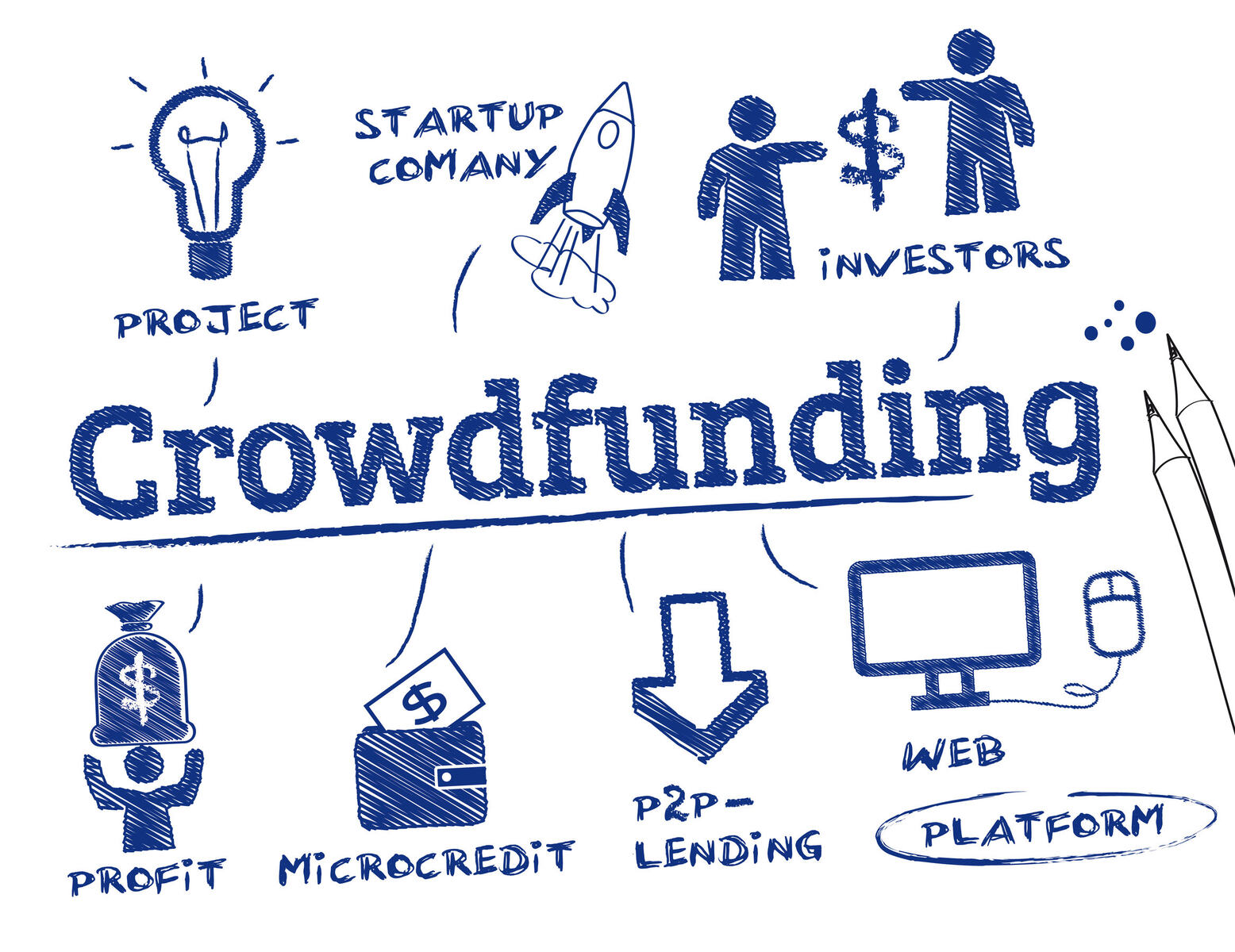Introduction
Crowdfunding has become an increasingly popular method for individuals to invest in a wide range of projects and ventures. The concept of crowdfunding is simple: a large group of people collectively contribute small amounts of money to fund a specific project or initiative.
With the rise of online platforms dedicated to crowdfunding, the process has become accessible to anyone with an internet connection. From supporting innovative startups to backing creative projects, crowdfunding has opened up new opportunities for investors to diversify their portfolios.
In this article, we will explore the basics of crowdfunding and delve into the different types available. We will also discuss the risks involved in crowdfunding and how to choose the right platform for your investment. Most importantly, we will guide you on how and when you can start making money through crowdfunding investments.
While crowdfunding offers exciting prospects, it is crucial to approach it with caution and a clear understanding of the potential risks. By educating yourself about the intricacies of crowdfunding, you can make informed decisions and optimize your chances of achieving favorable returns on your investment.
Whether you are a seasoned investor looking to diversify your portfolio or a beginner seeking to explore new investment opportunities, this article will provide valuable insights into the world of crowdfunding and how it can help you make money.
The Basics of Crowdfunding
Crowdfunding is a funding method that allows individuals or businesses to raise money from a large number of people, typically through an online platform. It provides an alternative to traditional funding methods such as bank loans or venture capital, and it has gained popularity due to its accessibility and potential for community involvement.
There are several key elements to understand when it comes to the basics of crowdfunding:
- Campaign Creation: The person or entity seeking funding creates a campaign outlining their project or business idea. This includes setting a funding goal, explaining the purpose of the project, and describing any rewards or incentives for contributors.
- Platform Selection: There are various crowdfunding platforms available, each with its own focus and requirements. It’s important to choose a platform that aligns with your project and target audience.
- Contribution: Individuals interested in supporting the project can contribute funds, often in exchange for rewards or incentives offered by the campaign creator. These rewards can range from a simple thank-you note to early access to the product or exclusive discounts.
- Funding Deadline: Campaigns typically have a set time frame within which they aim to raise the required funds. If the funding goal is not met by the deadline, the project may not receive any funding.
- All-or-Nothing vs. Keep-It-All: Some crowdfunding platforms follow an all-or-nothing model, where the project only receives the funds if the target amount is reached. Others adopt a keep-it-all model, where the project receives whatever amount is contributed, regardless of whether the goal is met.
Crowdfunding offers numerous benefits for both project creators and investors. For creators, it allows them to bypass traditional funding sources and gain exposure for their projects. It also enables them to validate their ideas and gather feedback from a community of potential customers.
For investors, crowdfunding provides an opportunity to support projects they believe in and potentially earn financial returns. Additionally, it allows individuals to diversify their investment portfolios and participate in sectors that were previously difficult to access.
While crowdfunding has revolutionized the fundraising landscape, it is not without its risks. In the next section, we will discuss the potential risks involved in crowdfunding and how to mitigate them.
Different Types of Crowdfunding
Crowdfunding is not a one-size-fits-all approach. In fact, there are several different types of crowdfunding, each catering to specific project types and investor preferences. Understanding these distinctions is crucial when considering where to invest your money.
Here are the main types of crowdfunding:
- Rewards-Based Crowdfunding: This is the most common type of crowdfunding, where contributors receive a reward or incentive in return for their financial support. These rewards can range from exclusive merchandise to early access to the product or personalized experiences. Rewards-based crowdfunding is ideal for creative projects, product development, and charitable causes.
- Equity-Based Crowdfunding: With equity-based crowdfunding, supporters receive shares or stakes in the company instead of physical rewards. This type of crowdfunding is often used by startups and small businesses looking to raise capital. Investors have the potential to earn financial returns if the company performs well.
- Debt-Based Crowdfunding: Also known as peer-to-peer lending, debt-based crowdfunding allows individuals to lend money to businesses or individuals at an agreed-upon interest rate. The borrowed funds are typically repaid over time, providing investors with a steady income stream.
- Donation-Based Crowdfunding: In donation-based crowdfunding, contributors donate money to charitable causes or projects without expecting any financial return. This type of crowdfunding is often used for humanitarian efforts, medical expenses, or community initiatives.
- Real Estate Crowdfunding: Real estate crowdfunding allows investors to invest in property projects. This can range from residential properties to commercial developments. Investors benefit from potential rental income, property appreciation, or revenue sharing.
Each type of crowdfunding has its own benefits and considerations. When deciding which type to invest in, it is crucial to consider your risk tolerance, investment goals, and the potential returns associated with each type of project. Furthermore, understanding the specific regulations and legal obligations that apply to each type of crowdfunding can help you make informed investment decisions.
Next in our discussion, we will explore the risks associated with crowdfunding and how to navigate them effectively.
Risks of Crowdfunding
While crowdfunding offers exciting opportunities and benefits, it is essential to be aware of the potential risks involved. Understanding these risks can help you make informed investment decisions and mitigate potential setbacks. Here are some key risks to consider when participating in crowdfunding:
- Investment Loss: Like any investment, crowdfunding carries the risk of loss. Not all projects succeed, and there is a possibility that you may not recoup your investment. It is crucial to thoroughly research the project, its team, and its financial viability before contributing your funds.
- Lack of Regulation: Crowdfunding is still a relatively new industry, and the regulatory framework can vary from one country to another. Some jurisdictions have implemented regulations to protect investors, while others have limited oversight. Lack of proper regulation can increase the risk of fraud or misuse of funds.
- Liquidity Risk: Investing in crowdfunding typically involves holding your investment for a certain period of time, as many projects have long timelines for completion or realization of returns. This illiquidity can make it challenging to access your funds if you need them in the short term.
- Project Failure: Crowdfunding projects, especially startups, have a higher risk of failure compared to established businesses. Market conditions, operational challenges, or mismanagement can lead to project failure, resulting in the loss of investment for all contributors.
- Limited Due Diligence: In some cases, detailed information about the project may not be readily available, making it challenging to conduct thorough due diligence. Limited access to financial statements, project details, or the background of the team can make it harder to assess the project’s viability.
- Market Volatility: Economic or market fluctuations can impact the success of crowdfunding projects. Changes in consumer behavior, competition, or unforeseen challenges can have a significant impact on the project’s viability and potential returns.
While these risks exist, it is important to note that not all crowdfunding projects are high-risk. Conducting due diligence, diversifying your investments, and investing in projects with strong fundamentals can help mitigate some of these risks.
Next, we will explore how to choose the right crowdfunding platform to maximize your investment potential.
Choosing the Right Crowdfunding Platform
With the growing popularity of crowdfunding, numerous platforms have emerged, each offering different features and catering to specific types of projects. Choosing the right crowdfunding platform is crucial to maximize your investment potential and mitigate risks. Here are some factors to consider when selecting a platform:
- Project Focus: Different platforms specialize in various project categories, such as technology, arts, social causes, or real estate. Consider the type of projects you are interested in and choose a platform that aligns with your investment goals.
- Track Record: Research the track record of the platform and its previous projects. Look into the success rates of funded projects, the average returns, and the overall reputation of the platform within the crowdfunding community.
- Platform Fees: Crowdfunding platforms typically charge fees for their services, including a percentage of the funds raised or a flat fee. Compare the fee structures of different platforms to ensure they align with your budget and expected investment returns.
- Investor Protections: Understand the investor protections offered by the platform. This may include safeguards against fraudulent or failed projects, dispute resolution mechanisms, or escrow services that hold funds until project requirements are met.
- Community and Support: Consider the platform’s community and support services. A robust community can provide valuable insights and tips, while responsive customer support can help address any concerns or issues you may have during the investment process.
- Ease of Use: Evaluate the platform’s user interface and ease of use. A user-friendly platform with intuitive navigation and clear instructions can make your investment experience smoother and more enjoyable.
Take the time to research and compare different crowdfunding platforms before making a decision. Read reviews, talk to other investors, and consider the platform’s overall fit with your investment strategy and goals.
It is important to note that diversifying your investments across multiple platforms can help spread the risks and increase your chances of finding successful projects. However, always keep in mind the total amount you are investing and ensure it aligns with your overall financial situation and risk tolerance.
Now that we have discussed how to choose the right crowdfunding platform, let’s explore how and when you can start making money through crowdfunding investments.
How and When You Make Money
Crowdfunding investments can yield returns for investors in different ways, depending on the type of crowdfunding and the specific project. Here are some common ways in which you can make money through crowdfunding:
- Rewards-Based Crowdfunding: If you have invested in a rewards-based crowdfunding campaign, you may receive the promised rewards or incentives once the project is successfully funded and completed. These rewards can range from exclusive products or services to unique experiences.
- Equity-Based Crowdfunding: In equity-based crowdfunding, you become a shareholder or stakeholder in the project or business. As the project grows and generates profits, you may receive financial returns in the form of dividends, revenue sharing, or through the eventual sale of your shares.
- Debt-Based Crowdfunding: With debt-based crowdfunding, you earn money through interest payments on the loan you provided to the borrower. The interest rate and duration of the loan are predetermined, ensuring regular income during the loan term.
- Real Estate Crowdfunding: When investing in real estate crowdfunding, you can make money through rental income, property appreciation, or revenue sharing. The returns depend on the performance of the property or development project.
- Secondary Market: Some crowdfunding platforms offer a secondary market, allowing investors to sell their shares or investments to other interested parties. This provides an opportunity to liquidate your investment and potentially make a profit.
- Exit Strategies: In equity-based crowdfunding, the exit strategy determines when and how you can potentially realize your returns. Exit strategies can include initial public offerings (IPOs), acquisitions, or buybacks by the founders or management team.
The timing of when you make money from crowdfunding investments varies depending on the project and its specific terms. Some projects may provide returns in a relatively short time frame, while others may require longer periods for the project to reach maturity or for an exit strategy to materialize.
It’s essential to carefully review the project details, the estimated timeline for returns, and any exit strategies mentioned when considering an investment. Understanding the projected timing of returns can help you align your investment goals and expectations accordingly.
Remember that the potential for making money through crowdfunding investments comes with inherent risks. It’s important to diversify your investments, conduct due diligence, and understand the potential challenges and uncertainties associated with each investment opportunity.
In the next section, we will delve into understanding returns on your investment and how to assess the potential profitability of crowdfunding projects.
Understanding Returns on Your Investment
When investing in crowdfunding projects, understanding the potential returns on your investment is crucial for making informed decisions. The returns can vary depending on the type of crowdfunding and the specific terms of the project. Here are some key factors to consider when assessing the potential profitability:
- Risk and Reward: Higher potential returns often come with higher risks. Assess the risk level of the project and consider your risk tolerance. Keep in mind that the higher the potential returns, the higher the potential for loss.
- Projected Returns: Review the project’s business plan or financial projections to determine the expected returns. Consider factors such as revenue streams, growth potential, and market conditions to evaluate the credibility of the projections.
- Exit Strategy: Understand the planned exit strategy and how it aligns with your investment goals. Evaluate the feasibility of the proposed exit strategy, such as the likelihood of an IPO or acquisition, to assess the potential returns and the anticipated timeline.
- Market Analysis: Research the market in which the project operates to assess the potential demand and profitability. Analyze trends, competition, and market dynamics to determine the viability of the project and its potential for generating returns.
- Team and Expertise: Evaluate the experience and track record of the project’s team. A strong and capable team increases the likelihood of project success and potential returns on your investment.
- Diversification: Diversifying your crowdfunding investments across different projects, industries, and platforms can spread the risk and help optimize your overall returns. By diversifying, you can reduce the impact of any individual project’s performance on your investment portfolio.
It’s important to note that past performance is not indicative of future returns. Even with careful analysis and due diligence, there are inherent uncertainties and risks associated with crowdfunding investments.
Additionally, keep in mind that crowdfunding projects may have longer investment horizons compared to more traditional investments. Many projects require time to develop, grow, and generate returns. Patience and a long-term perspective are often necessary for achieving profitable returns on your crowdfunding investments.
Understanding the potential returns on your crowdfunding investments allows you to make informed decisions about where to allocate your funds. However, be sure to consult with financial professionals and do thorough research before making any investment decisions.
In the next section, we will explore exit strategies and returns in more detail through real-life case studies of successful crowdfunding investments.
Exit Strategies and Returns
Exit strategies play a crucial role in determining when and how you can realize returns on your crowdfunding investments. Understanding the available exit options and assessing their potential returns is essential for making informed investment decisions. Here are some common exit strategies and their associated returns:
- IPO (Initial Public Offering): Some crowdfunding projects aim to go public by listing their shares on a stock exchange. If the project successfully completes an IPO, investors may have the opportunity to sell their shares to the public at a potentially higher valuation, resulting in significant returns.
- Acquisition: Another possible exit strategy is for the project to be acquired by a larger company. In such cases, investors may receive a payout proportional to their investment, providing a return on their initial investment.
- Buyback: Some projects may include a buyback provision in their terms, allowing the project’s founders or management team to repurchase the shares or investments from investors. The buyback price may include a predetermined premium or return on the original investment.
- Revenue Sharing: In certain cases, crowdfunding investments can provide returns through revenue sharing. This means that as the project generates revenue, investors receive a percentage of the profits in proportion to their investment.
- Secondary Market: Some crowdfunding platforms offer a secondary market where investors can sell their shares or investments to other interested parties. This provides an opportunity to exit the investment and potentially earn returns if there is demand for the investment.
- Dividends: In equity-based crowdfunding, a project may distribute regular dividends to investors based on its profitability. These dividends can provide ongoing returns on the investment, though they depend on the project’s financial performance.
The timing and availability of these exit strategies can vary. Some projects may offer a clear timeline for potential exits, while others may require a longer investment horizon before any exit opportunity arises.
It is crucial to thoroughly review the terms and conditions of the crowdfunding investment and understand the exit strategy before investing. Keep in mind that not all projects guarantee successful exits or high returns, and there is always a level of risk associated with crowdfunding investments.
Examining real-life case studies can provide valuable insights into the potential returns and exit strategies in crowdfunding. In the next section, we will explore successful crowdfunding investments and the outcomes they achieved.
Case Studies: Successful Crowdfunding Investments
Examining successful crowdfunding investments can offer valuable insights and inspiration for investors looking to explore the potential returns of crowdfunding. Here are a few notable case studies that highlight the successes achieved through crowdfunding:
1. Oculus Rift
Oculus Rift, a virtual reality company, launched a crowdfunding campaign on Kickstarter in 2012. The campaign aimed to raise funds for their innovative VR headset. The project quickly gained traction and exceeded its funding goal, raising over $2.4 million from enthusiastic backers.
In 2014, Facebook acquired Oculus Rift for approximately $2 billion, providing a substantial return for the early crowdfunding investors. This success story showcases the potential for significant financial returns and successful exits through crowdfunding investments.
2. Pebble Smartwatch
Pebble Technology, a startup focused on smartwatches, ran a highly successful crowdfunding campaign on Kickstarter in 2012. The campaign raised over $10 million, making it one of the most funded projects on the platform at the time.
The Pebble smartwatch went on to become one of the most popular smartwatch brands, with millions of units sold worldwide. In 2016, the company was acquired by Fitbit, leading to a rewarding exit for its early crowdfunding backers.
3. Kingdom Death: Monster
Kingdom Death: Monster, a board game project, launched a crowdfunding campaign on Kickstarter in 2012. The project rapidly gained attention and became one of the highest-funded board games on the platform, attracting over 5,000 backers and raising close to $2 million.
The successful crowdfunding campaign helped the creators bring their ambitious board game to life and establish Kingdom Death as a prominent brand in the board gaming industry. This case study demonstrates the potential for crowdfunding to support creative and niche projects that resonate with a dedicated audience.
These case studies highlight the substantial returns and successes that can be achieved through crowdfunding investments. However, it is essential to remember that these examples represent exceptional outcomes, and not all crowdfunding projects will yield such significant returns.
When considering crowdfunding investments, conduct thorough research, assess the project’s potential, review the track record of the creators, and evaluate the proposed exit strategies. Diversify your investments and carefully consider your risk tolerance to optimize your chances of success.
Now that we have explored successful crowdfunding case studies, let’s summarize the key points discussed and provide some closing thoughts.
Conclusion
Crowdfunding presents exciting opportunities for investors to participate in a wide range of projects and ventures. By understanding the basics of crowdfunding, the different types available, and the associated risks, investors can make informed decisions to maximize their chances of success.
Choosing the right crowdfunding platform is crucial. Consider the platform’s focus, track record, fees, investor protections, and ease of use before committing your funds. Diversifying your investments across multiple projects and platforms can help mitigate risks and optimize your returns.
Understanding the potential returns on your investments is essential for setting realistic expectations. Analyze the projected returns, exit strategies, market conditions, and team expertise to assess the profitability of a crowdfunding opportunity. However, bear in mind that crowdfunding investments come with inherent uncertainties and risks.
By examining successful crowdfunding case studies, such as Oculus Rift, Pebble Smartwatch, and Kingdom Death: Monster, we can gain insights into the potential for substantial returns and successful exits. However, it is important to note that these cases represent exceptional outcomes and not all crowdfunding investments will yield such high returns.
Before making any crowdfunding investment, conduct thorough due diligence, assess the project’s viability, and carefully consider your risk tolerance and financial situation. Consult with financial professionals if needed to ensure your investment strategy aligns with your individual goals and circumstances.
Crowdfunding offers an innovative and accessible avenue for investors to support projects and potentially earn returns. By navigating the crowdfunding landscape strategically and thoughtfully, you can make the most of this investment opportunity and contribute to the growth of exciting ventures.










![How Does Crowdfunding Work? [Beginner-Friendly]](https://robots.net/wp-content/uploads/2020/07/How-does-crowdfunding-work-300x212.jpg)














